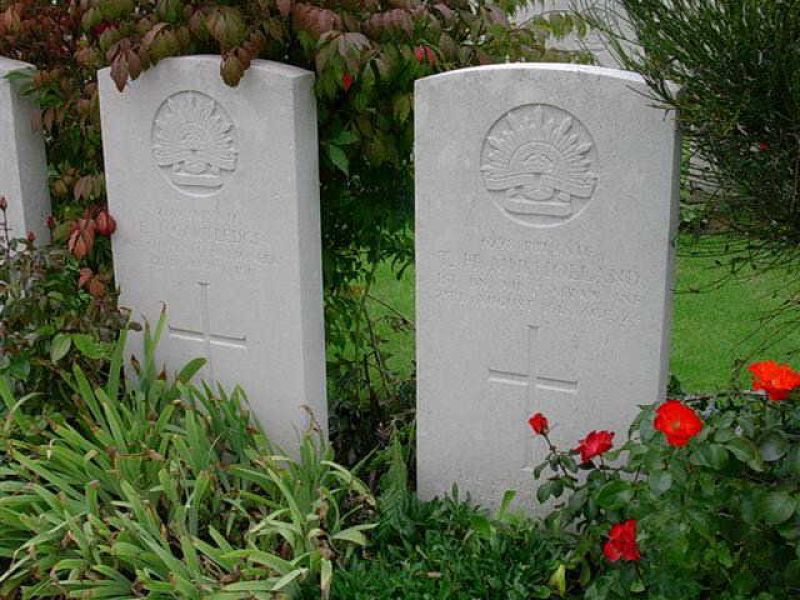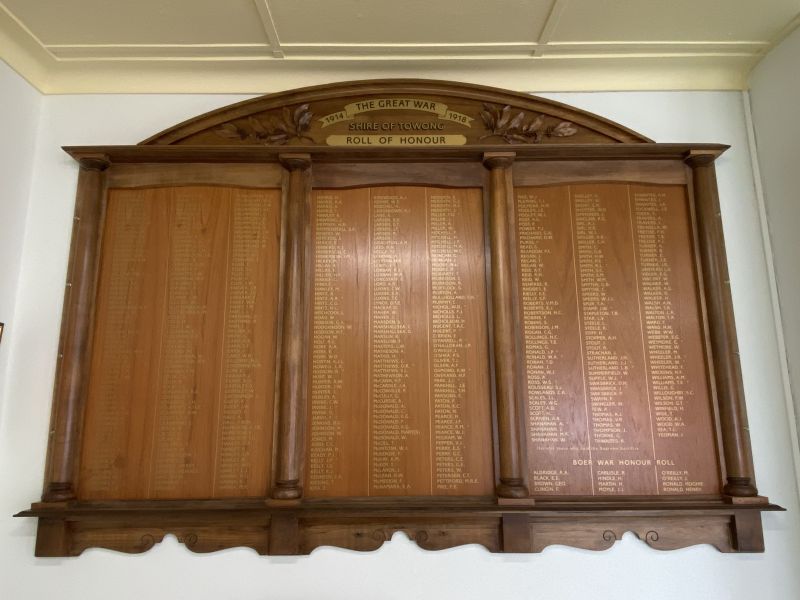Thomas Henry Mullholand
Thomas was born in 1894 in Tallangatta, Victoria. He was one of six children to David and Adelaide (née Bennett) Mulholland. Thomas’ older brother, David, passed away when Thomas was only eight years-old.
March of 1916 saw Thomas working as a labourer around the Cootamundra district of New South Wales. On the 14th of March he walked into the recruiting office and filled in his attestation papers. On the same day he was examined by a medical officer and passed as fit for active service. It was then off to Liverpool Army Camp 30 kilometres to the west of Sydney where he became part of A Company of the 20th Reinforcements for the 1st Battalion.
Almost six months after enlisting, Thomas found himself embarking on HMAT A4 Euripides at Sydney. The journey to England took over six weeks and it was on the 26th of October 1916 when the 20th Reinforcements disembarked at Portsmouth. It appears that Thomas became ill around the time he arrived in England. His service records indicate that he joined his battalion on the 8th of December having marched in from No. 3 Convalescent Depot. Thomas spent the next 12 weeks at Larkhill Camp on the wet and windy Salisbury Plain being trained and developing skills he would need for the fighting on the Western Front.
On the 4th of February 1917 he embarked on the SS Victoria at Folkestone and sailed the English Channel to join his battalion. One month later, on the 21st of March, he became sick once more and was admitted to the 45th casualty Clearing Station where he was diagnosed as having pneumonia. He was placed aboard the Hospital Ship Warilda and, upon arriving in England, was transferred to the Royal Victoria Hospital at Netley near Southampton in the south of England. Thomas would remain in hospital for over 3 months. After recovering he was given two weeks leave. He was posted to the Overseas Training Brigade at Perham Downs, north of Salisbury. This training camp dealt with soldiers who had been discharged from hospital and needed training before being sent back to France. On the 21st of October, 7 months to the day that he had been admitted to hospital, he rejoined the 1st Battalion in France.
The first few months of 1917 were a series of highs and lows for Thomas. In mid January he was given another two weeks leave to Paris. However in mid March he was back in hospital, suffering from scabies. He spent almost two weeks in the 12th Australian Field Ambulance recovering. On the 2nd of May he was sent on a course at the 2nd Army Musketry School in France. Four days later he was admitted to the New Zealand Stationary Hospital suffering from a P.U.O. (pyrexia or fever of unknown origin). After a relatively short stay of twelve days he was discharged to duty. He rejoined his battalion four days later on the 22nd of May 1918.The battalion had only arrived at Laviéville, 20 kilometres north-east of Amiens, the day prior to Thomas rejoining them.
Thomas was in the same battalion as James Kelly, but in a different company. Thomas was in B Company while James was in C Company. However, their experiences in the lead up to action in August would have been similar. While in the front line, two companies would be manning the trenches, with the remaining two being used for fatigue, such as food and ammunition carriers. There would also have been the letters from home to read and ponder over. It would also have been time to write letters home to loved ones, especially as there was a major action coming up.
At 0200 hours on the 8th of August the four companies of the 1st Battalion took their places; A Company on the right flank, C on the left, D in support and B in reserve. At 0445, 1386 field guns and howitzers and 684 heavy guns unleashed a rain of hell upon the German trenches. As whistles blew and men reached up and pulled themselves out of the trenches more than 500 tanks rattled along next to the infantry. By the end of the day the Germans had been pushed back almost 11 kilometres. The German General Eric Ludendorff described the days as the “black day of the German Army”.
Plans were made to extend the line and push the Germans even further back. In this operation B, C and D Companies were to be the assaulting troops. Thomas’ Red Cross File provides an eye-witness account of what happened to him;
“I carried Mulholland (B Company) back to the D/S [Dressing Station] when he was wounded by a shell while we were waiting our turn to advance in front of Morlancourt. His right leg had been blown off and he had been badly gassed. He was quite conscious and said to me “I’m finished.” I saw his grave with a cross on it in a military cemetery at Morlancourt.
1st Battn: Moffitt, H.Pte. 7287”
Thomas was buried in the Heath Cemetery in Picardie, France. He is also remembered on the Australian War Memorial Roll of Honour, and the Towong Shire Boer War and WW1 Roll of Honour. For his service during the First World War he was awarded the British War Medal and the Victory Medal.

 Stephen Learmonth
Stephen Learmonth